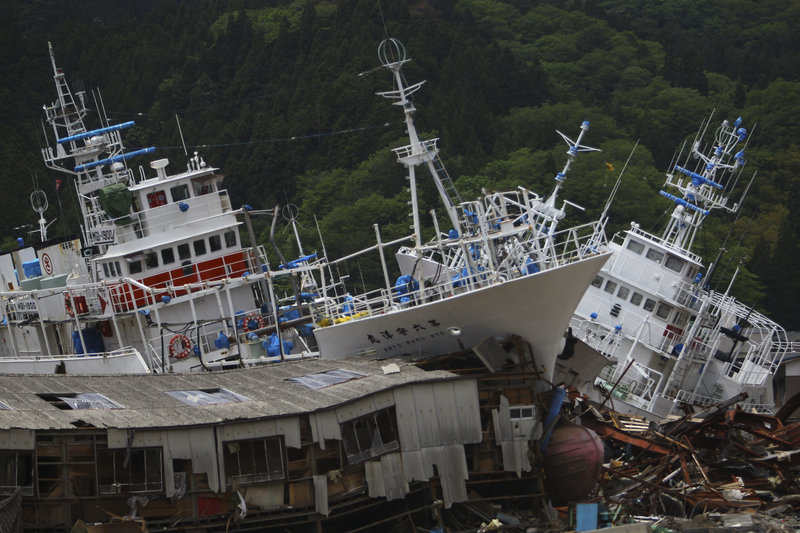TOKYO — A major international mission to investigate Japan’s flooded, radiation-leaking nuclear complex began Tuesday as new information suggested that nuclear fuel had mostly melted in two more reactors in the early days after the March 11 tsunami.
That would mean all three troubled reactors at the plant have cores that are mostly melted down.
The team of U.N. nuclear experts met with Japanese officials and planned to visit the Fukushima Dai-ichi plant in coming days to investigate the worst nuclear accident since Chernobyl in 1986 and assess efforts to stabilize the complex by Tokyo’s self-declared deadline of early next year.
Meanwhile, the plant operator, Tokyo Electric Power Co., released a new analysis suggesting that fuel rods in plant units 2 and 3 mostly melted during the early days of the crisis, which had been suspected but not confirmed.
In addition, some chunks of the fuel appeared to have entered the outer containment chambers, causing some damage.
That suggests the severity of the accident was greater than officials have acknowledged. TEPCO announced similar findings last week about Unit 1.
The new revelations indicate that earlier official assessments may have been too optimistic, said Goshi Hosono, director of Japan’s nuclear crisis task force.
“We should have made a more cautious damage estimate based on a worse scenario,” he said.
Fuel in three of the plant’s six reactors started melting just hours after the March 11 tsunami knocked out cooling systems, prompting huge releases of radiation into the atmosphere — about one-tenth of the radiation released from the Chernobyl disaster in 1986, according to a government estimate.
The melted fuel rods, which appear to have fallen into a lump at the bottom of each of the three pressure vessels, currently pose no immediate problem because they are mostly covered with water being pumped into the chamber and are at temperatures far below dangerous levels, officials say.
The plant is still leaking radiation, but at much lower levels than immediately after the accident. Japanese officials hope to bring the entire plant to a “cold shutdown” — halting all radioactive leaks — by January at the latest.
In the meantime, 80,000 people remain evacuated from homes around the plant. Many are living in school gymnasiums. A handful of stalwarts have defied government orders and refused to leave.
The team from the Vienna-based International Atomic Energy Agency conferred Tuesday with Japan’s economy and trade minister, who oversees — and promotes — the nuclear industry, and will visit Japan through June 2 before reporting to an international conference in Vienna on June 20.
Michael Weightman, leader of the IAEA team, said the delegation would “seek information to see how the world can learn lessons from the unfortunate events here.”
Hosono said the team had submitted a “long list” of questions, and that authorities would do their best to answer them.
The government also said it was appointing University of Tokyo Professor Yotaro Hatamura, an expert on industrial and other accidents, to head a panel of outside experts to investigate the Fukushima accident.
The crisis has raised serious questions about lax oversight of Japan’s nuclear industry and prompted the country to scrap plans to rely on nuclear power for half its electricity needs, up from its current one-third.
Send questions/comments to the editors.



Success. Please wait for the page to reload. If the page does not reload within 5 seconds, please refresh the page.
Enter your email and password to access comments.
Hi, to comment on stories you must . This profile is in addition to your subscription and website login.
Already have a commenting profile? .
Invalid username/password.
Please check your email to confirm and complete your registration.
Only subscribers are eligible to post comments. Please subscribe or login first for digital access. Here’s why.
Use the form below to reset your password. When you've submitted your account email, we will send an email with a reset code.